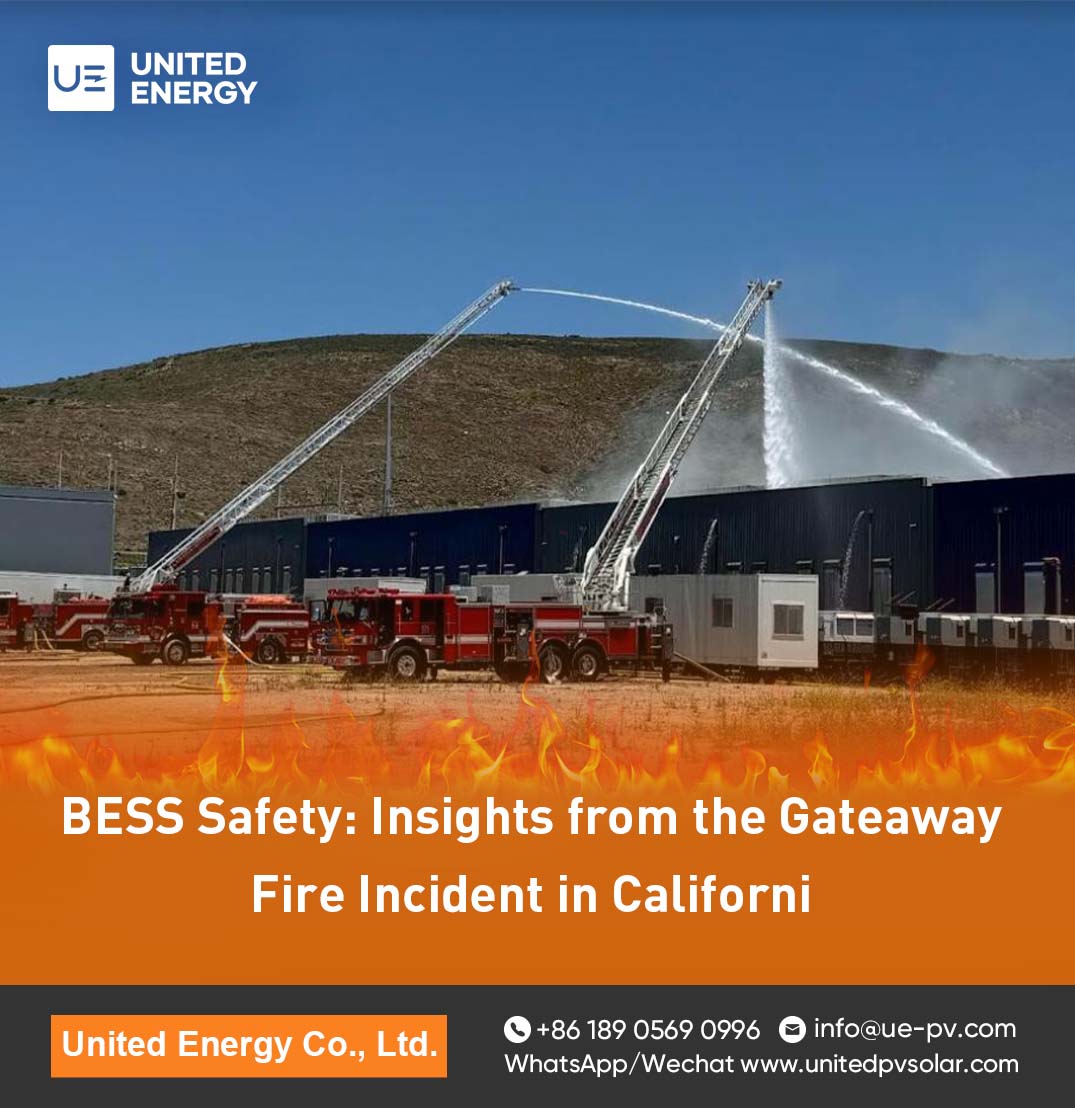Factory Audit;
Goods Inspection;
Third Party Test.
BESS Safety: Insights from the Gateaway Fire Incident in California
May 28, 2024Recently, according to reports from American media, a fire broke out at the Gateaway energy storage station in California, USA, on the evening of May 14th, local time. The California Fire Department dispatched 40 firefighters and 5 fire trucks to deal with the situation. As of the afternoon of May 21st, the Gateaway energy storage station had experienced two re-ignitions, and the fire had been burning for 6 days. This incident has once again drawn people's attention to Commercial & Industrial Battery Energy Storage System( C&I BESS) safety.

Current Status and Challenges of BESS Projects
The Gateaway energy storage station in California, USA, has a capacity of 250MW/250MWh. When it was connected to the grid on August 19, 2020, it was once the world's largest battery C&I ESS project. As a representative of new C&I ESS projects, the Gateaway energy storage station has exposed some key issues in Battery Energy Storage System safety management due to this fire.
Safety Comparison between Lithium-ion and Lithium Iron Phosphate Batteries
Reports indicate that the Gateaway energy storage station in California, where the fire occurred, used LG's lithium-ion batteries. Lithium-ion batteries are inferior to lithium iron phosphate batteries in terms of thermal runaway and thermal management. Cases of lithium-ion batteries catching fire or even exploding are not uncommon globally. In contrast, lithium iron phosphate batteries have higher safety standards, with thermal runaway temperatures between 250—300°C, compared to 120—140°C for lithium-ion battery packs. Additionally, lithium-ion batteries release large amounts of flammable gases when burning, while lithium iron phosphate batteries do not produce oxygen, making them easier to control in fire situations.
Design and Management of Energy Storage Systems
The fire incident also revealed deficiencies in the safety design, thermal runaway management, and operational maintenance of the energy storage station. The Gateaway energy storage station adopts a stacked layout, with large-capacity batteries concentrated in enclosed spaces. Once the firefighting agents are depleted, only water can be used internally or externally, prolonging the duration of the fire. Moreover, the monitoring system of the station failed, making it impossible to monitor and control the internal environment, further exacerbating the re-ignition and spread of the fire.
Multi-layered Fire Protection Systems
Although lithium-ion battery energy storage systems pose certain safety risks, effective control can be achieved through design and management. UE energy storage systems typically employ three layers of fire protection systems: cell-level, pack-level, and system-level. If a single cell experiences thermal runaway, it can be detected and isolated through intelligent monitoring. If the problem escalates to the pack level, automatic firefighting systems will activate to contain the fire. At the system level, additional fire protection systems ensure that surrounding environments or the power grid are not affected.
UE can offer full lifecycle services for most commercial and industrial energy storage projects, ensuring that all issues are addressed throughout the lifecycle of the station, with safety being a priority.
Conclusion
C&I ESS safety is a complex and critical issue that requires attention to design, management, and technological innovation. The Gateaway energy storage station fire incident in California reminds us that while C&I ESS technology presents challenges, safety risks can be effectively controlled through scientific design and management. The sustainable development of the C&I ESS industry requires collaborative efforts to promote technological advancement and optimize management practices, ultimately leading to a safer and more reliable future for energy storage system technology.